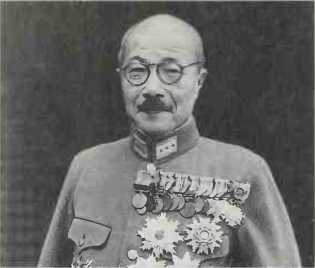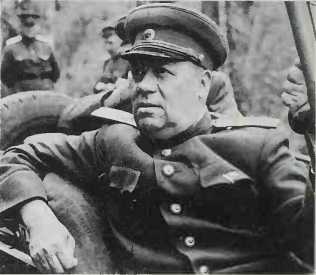Todt Organization. Nazi agency under the leadership of Dr Fritz Todt. It was responsible for construction work e. g. the West Wall, U-boat shelters. It employed much slave labour.
Togo, Adm of the Fleet Marquis Heihachiro (1847-1934). Jap. c-in-c of the Japanese Grand Fleet during the Russo-Japanese War. Togo’s strike at Port Arthur on February 8 1904 was, like Pearl Harbor in 1941, both pre-emptive and a partial failure. Concerned to keep his fleet in being to protect Japan’s lines of communication, Togo did not press home an attack with his major units that might have shortened the war. However, he displayed great tenacity in maintaining his blockade and, when the Russian squadron at last made a sortie in force, mauled its ships severely in a hard-fought action in the Yellow Sea, August 10 1904, and drove them back to Port Arthur to be destroyed severally by land batteries.
Dour and taciturn, Togo was a cautious commander - but one who would take risks when the situation justified them. At Tsushima on May 27 1905, he turned his ships in succession, exposing each in turn to the fire of an opponent superior in heavy guns while masking his own supporting fire, in order to gain the tactical advantage that brought him the most emphatic naval victory since Trafalgar. The “Nelson of Japan” became a popular hero in Britain and the USA as well as at home, where his flagship at Tsushima, Mikasa, is preserved as a national monument. Like Nogi, Togo was hailed as the embodiment of the samurai virtues and subsequently became an icon of Japanese patriotism. RO’N.
Togoland (1914). In August 1914, a 160-strong French force from Dahomey and a 600-strong British force from the Gold Coast (native soldiers with European officers) invaded the German protectorate of Togoland, West Africa. Having succeeded in delaying the Allied advance through the bush until its objective, the wireless station at Atakpame, 100 miles (160km) inland, had been destroyed, Togo-land’s 550-strong Polizeitruppe surrendered on August 26.

Japan’s war leader: Gen Hideki Tojo
Tojo, Gen Hideki (1884-1948). Jap. A savagely efficient administrator as c-in-c, Kempei-tai (military police), Kwantung Army, 1935-36, and an effective field commander, as cos, Kwantung Army, 1937—40. A leading figure in the militarist “Control Group”, he advocated aggression as ViceMinister of War (1938) and War Minister (from July 1940), and was active in ousting both the more pacific Prince Fumimaro Konoye (1891-1945) and the anti-Axis Adm Mitsumasa Yonai (18801948) from the premiership, himself becoming Prime Minister in October 1941 and presiding over Japan’s entry into World War II. Austere and eschewing rhetoric, Tojo was never the fearsome dictator that both Western propaganda and his personal appearance (almost a caricature of the “typical” militarist) suggested. However
. many offices he assumed, his power was always subject to that of the supreme command, who, in July 1944, forced his resignation as the scapegoat for Japan’s reverses. Arrested by the US occupation forces in September 1945, Tojo survived a suicide attempt to be condemned to death for “war crimes” (like Yamashita and others, he attempted to shield Hirohito by accepting all blame). He was hanged on December 23
1948. RO'N.
Tokyo, bombing of (1942-45). The first Allied bombing raid on Tokyo took place on April 18' 1942 when Lt Col Doolittle led sixteen B-25 bombers on an audacious carrier-borne operation. The raid did little damage but lifted American morale and shook Japanese feelings of impregnability. However, it was not until November 24 1944 that the new B-29 bombers attacked Tokyo but these high altitude, precision raids proved ineffective. Gen LeMay, the commander of the US XXI Bomber Command, therefore changed the tactics to night-time bombing at low-level using incendiaries. The first raid took place on May 10 when over 300 B-29s created a firestorm that razed 15 sq miles (39 sq km) of Tokyo and inflicted
125,000 casualties. On May 26 464 bombers carried out the largest of the raids, releasing 2,200 tons of incendiaries and destroying another 19 sq miles (49 sq km) of the city. Devastating raids continued until the end of hostilities. MS.
“Tokyo Rose”. Generic nickname given by US servicemen during World War II to several Nisei (US-born of Japanese parentage) girls who made pro-Japanese propaganda broadcasts from Tokyo. Best-known was Iva Ikuko Toguri d’Aquino (b. l916): sentenced to 10 years’ imprisonment (served 6 years), she always maintained that she had acted under duress and was pardoned by President Ford in 1977.

Tolbukhin: liberator of the Crimea, 1944




 World History
World History









